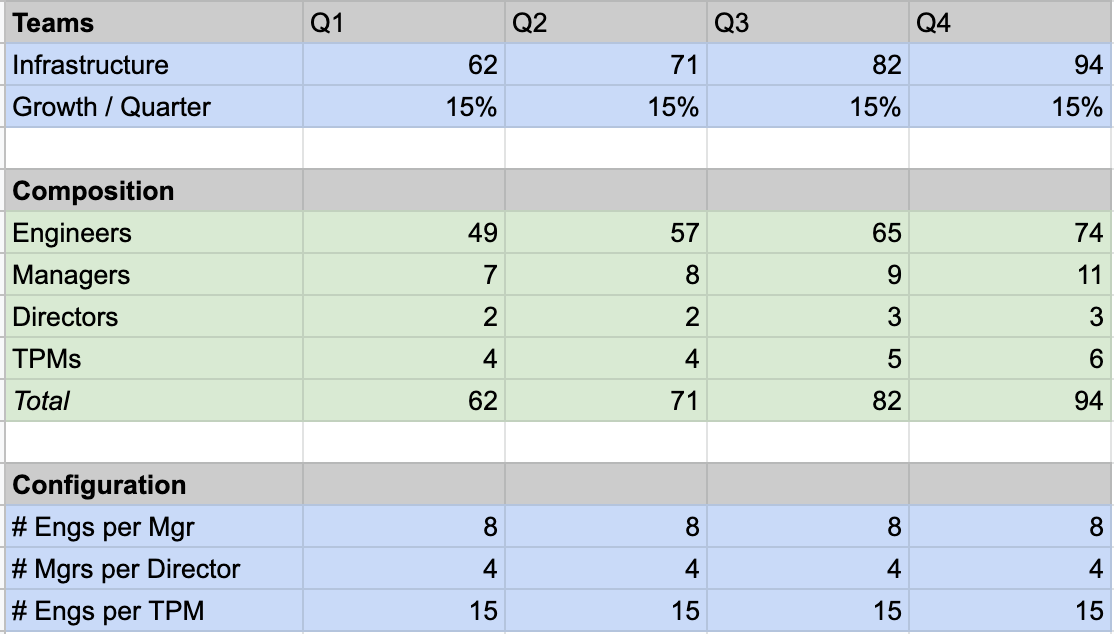Organizational Design
Fork the org growth template and the org design template.
Having been involved in quite a few budget and headcount processes over the years, one thing that continues to surprise me is how often folks make major headcount requests without having done any organzational design of those those requested heads will compose into an organization.

The good news is that the high-level sort of organizational design required for headcount planning is abstract, low granularity, and it’ll likely only take you a couple hours to do a first pass. Add a few more hours to gather feedback, and you’ll have a reasonably good organizational design.
Related Tools
How to Use
Adjust
B4to reflect your organization’s current headcountAdjust
Growth/Quarter(Row 5) to reflect a reasonable quarterly growth number. This is going to be highly company specific. Either your headcount plan should provide some rough guidance or you can look at historical growth over the past year as a baseline assumption for next year’s growth. This only needs to be directionally accurate, and it’s better to be conservative than unrealisticTweak the values in
Configurationto match with your organization’s beliefs, and to account for whatever roles your org does or does not have (technical program managers, product managers, etc). I’ve previously written up my rationale for a 1:8 ratio of managers to engineers, but the exact numbers here will depend on your organization. Again, these numbers just need to be directionally accurate, not perfectYou now know approximately how many teams and groups (e.g. teams of teams) you’ll have over the next year, and even the next several years if you extend the forecast
Started by linking your Org Growth projections into the
Projectionssection. This will give readers context of your organization’s planned growth over the year without opening the sheet (you should absolutely link the sheet, but most readers will probably never open it)Within
Plan, start designing your organizational structure to match the size at the end of this year (or roughly twelve months out if you’re not doing this around January). The number ofDirectorswill determine how many groups (e.g. teams of teams) you’ll need, and the number ofManagerswill determine the number of teams to distribute across those groups.You should explicitly name each of those groups (e.g. Dev Productivity) and also connect each group to a subset of your organiztion’s goals or roadmap. You should further name the teams within each group to provide some flavor for how the group might be composed. It’s fine for team names can be a bit fuzzy as the relevant Directors will tweak the pieces a bit as they come into play, but the groups should be fairly firm
Extend
Planwith a short proposal for how you’ll move from current state (e.g. 0 Directors) to future state (e.g. 3 Directors)Tweak
Peer Comparisonsto highlight structures at comparably sized organizations with similar scopeWrite your
Summarysection focusing on group structure roughly a year outRead over your Org Design document. If following the model has introduced any particularly awkward elements, then go ahead and rewrite them with something that you find more natural
Now you’re done!
Tips
- Your goal is understanding how you’ll structure your organization, as opposed to the precise number of hires on each team. Try to exclusively use the default team and group size parameters to focus you on the structure rather than precision